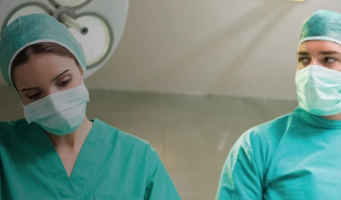Anaesthesia Fundamentals | Anatomy | Spinal Cord, Major Ascending and Descending Pathways



Spinal Cord, Major Ascending and Descending Pathways
Session Overview
Description
This session covers the anatomy of the spinal cord, and focuses on the spinal nerves, and the nerve pathways ascending and descending, through its structure. It also covers the blood supply to the spinal cord.
Learning Objectives
By the end of this session you will be able to:
- Identify the macroscopic structure of the spinal cord
- Identify the structure of the spinal nerves
- Explain the coronal section of the spinal cord
- Recall the major motor and sensory pathways
- Describe the blood supply of the spinal cord
For a number of reasons it is important for anaesthetists to have a working knowledge of the spinal cord (Fig 1).
A good working knowledge will help facilitate the following:
- An understanding of pain pathways to enable rational management of acute and chronic pain
- Safe spinal anaesthesia
- Allows the anaesthetist to perform effective preoperative assessment of patients with spinal cord lesions
- An understanding of symptoms caused by various spinal cord lesions e.g. disc prolapse, anterior spinal artery syndrome, hemisection of the spinal cord
- Anaesthesia Fundamentals | Anatomy | Hazards of Po...
- Posted By eIntegrity Healthcare e-Learning
- Posted Date: 2024-11-25
- Location:Online
- The patient positioned for surgery is vulnerable to extraneous harm. Knowledge of the common injuries and understanding of the causes of harm enables the anaesthetist to minimize the risks.
- Anaesthesia Fundamentals | Anatomy | Bones And Joi...
- Posted By eIntegrity Healthcare e-Learning
- Posted Date: 2024-11-25
- Location:Online
- This session describes the anatomy of the upper and lower limbs, concentrating on the bones and joints. Particular attention is paid to those bones and joints that are of importance to the anaesthetist.
- Anaesthesia Fundamentals | Anatomy | Facial Skelet...
- Posted By eIntegrity Healthcare e-Learning
- Posted Date: 2024-11-25
- Location:Online
- This session describes the bones of the facial skeleton and skull vault. The important muscles that move the mandible are described. The classification and positions of fracture lines commonly seen following trauma to the face and surgical osteotomy are a
- Anaesthesia Fundamentals | Anatomy | Spine Part 2:...
- Posted By eIntegrity Healthcare e-Learning
- Posted Date: 2024-11-25
- Location:Online
- This session covers the anatomy of the sacrum, coccyx and sacral hiatus. It describes the intervertebral discs and spinal ligaments, and the vertebral levels of some of the surface markings of the body. The different types of spina bifida are reviewed.
- Anaesthesia Fundamentals | Anatomy | Spine: Cervic...
- Posted By eIntegrity Healthcare e-Learning
- Posted Date: 2024-11-25
- Location:Online
- The session covers the anatomy of the bones of the vertebral column in the cervical, thoracic and lumbar regions.

